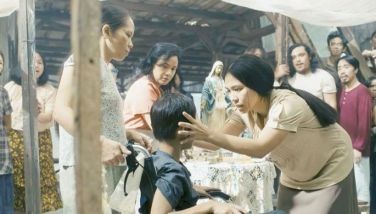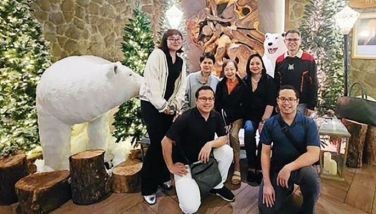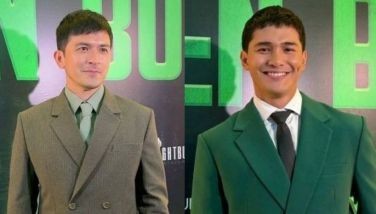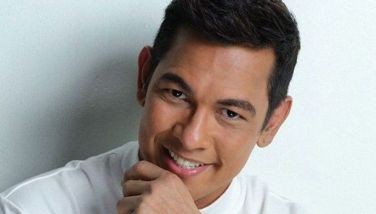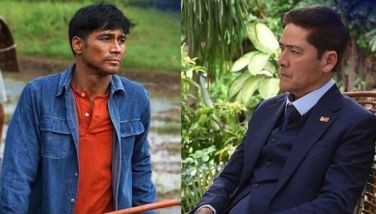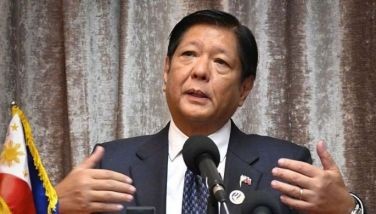Magical Mystery Tour Reexperienced
MANILA, Philippines - That year was the Summer of Love, 1967. The Beatles, emerging from the success of the Sgt. Pepper album and the first-ever worldwide satellite broadcast recording of the group’s single, All You Need Is Love, embarked on making a film by themselves. The result was public outrage. Forty-five years hence, the film is rereleased and revisited. What’s the story behind the film, which resulted in a critical failure but was, in some ways, ahead of its time?
Like any other year preceding it, 1967 was a colorfully hectic period for The Beatles. The touring finally ended in August 1966 and immediately after that The Beatles went separate ways to pursue varying interests only to reunite in the studio that November to work on the Sgt. Pepper album with two seminal songs, Strawberry Fields Forever and Penny Lane, that came out as double Side A single and dictated the direction Beatle music was heading. The album came out on June 1, 1967 and enjoyed both critical and commercial success. Accolades for Sgt. Pepper had not yet subsided when The Beatles recorded live what would become the theme of The Summer of Love, All You Need Is Love, which was viewed by hundreds of millions of people across the globe, thanks to satellite linkup.
By July, the group would be entangled in a controversy with the media with Paul admitting having taken LSD. George, for his part, visited Haight-Ashbury in San Francisco the following month only to be disillusioned when he saw “it was full of horrible spotty dropouts on drugs… this Mecca of LSD.â€
That same August, two more major shakeups in the lives and career of The Beatles ensued — the group’s discovery of transcendental meditation under Maharishi and the death of Brian Epstein, their manager since 1962.
For the first time, The Beatles were left to their own devices, with no one to manage their business affairs and interests. Meeting after Brian’s death, the group reached at least two major decisions: They would handle their own business and build a company to be called Apple and, in the meantime, channel their creative juices to their next big project — the film Magical Mystery Tour.
Even George Martin, their famed producer, thought The Beatles by this time could do no wrong and succeed. But this next artistic dalliance by The Beatles would prove disastrous.
After the death of Brian, the film endeavor became almost self-imposed to put the tragedy behind them, try out a career behind the camera and demonstrate a capacity to manage the group’s affairs.
The idea for the film originated from Ken Kesey and his Merry Pranksters that traveled across America in a bus filming their intake of LSD, which up to that time was still legal, popularized in Tom Wolfe’s book The Electric Kool-Aid Acid Test. Paul came back from the US with the idea brewing in his head in April 1967. Both Brian and The Beatles were excited about the project.
It was a “dreamlike story of a coach trip†that Ringo, with his Aunt Jessie, agreed to take. Five magicians played by the four Beatles, plus Mal Evans later turned an ordinary coach trip into a Magical Mystery Tour.
Spontaneity was the rule in the filming. There was no script, but the general sequences of the film, which Paul and John drew as spokes of a wheel in a sheet of paper Paul called “scrupt.†There was no director, but cameramen. The Beatles directed, produced and acted in the film.
The filming started on Sept. 11, 1967 when the Magical Mystery Tour bus, a 60-seater coach donning a psychedelic look, took off for Devon and Cornwall with a cast and crew of 43 people. Subsequent events that day foretold many things about the film. Peter Brown, in his book, The Love You Make, said they hoped to find the Devon Fair, which was not organized at all, and they were chased by police for disturbing peace in Teigen so they headed for Brighton, where they filmed two cripples under the sun on the beach. Then lunch break posed another problem as they were short of food to feed the cast and crew. Logically, accommodations were also underbooked, and that stirred arguments, particularly among the fat ladies and dwarfs who did not at all warm up to the idea of sharing rooms.
Peter Brown rightfully observed that had Brian been around, it would not have been like that and some work system would have been put in place.
Filming with the cast and crew on the bus lasted until Sept.15 when the coach returned to London. On Sept. 18, The Beatles filmed the strip-club sequence at the Raymond Revue bar in Soho, London, after which The Beatles rented a massive hangar at West Malling in Kent for the next six days for more shoots. Filming would be back in West Malling on Oct. 1 for additional rolls and, two days later, it would move to Ringo’s house nicknamed “Sunny Heights.†Finally on Oct. 30, Paul went with a crew to Nice, France to shoot the Fool on the Hill sequence. This completed the filming.
The cast included four fan club secretaries, Beatles roadies Neil Aspinall and Mal Evans, a group of dwarfs, several professional actors like Ivon Cutler and Jessie Robbins who played Ringo’s Auntie Jessie, musicians such as Shirley Evans, a professional accordionist, The Bonzo Dog Doo-Dah Band, and even Spencer Davis with his wife who The Beatles chanced in Newquay, Cornwall, and a host of friends and non-professional cast invited to join in this surrealistic trip.
In the documentary Magical Mystery Tour Revisited, Paul recalls, “The sequences were just suggested, often by memories from our childhood.â€
Some scenes in the film included the impromptu marathon race, the recruitment for which Victor Spinetti (a veteran in the first two Beatles films) took time off from his other filming schedule to play the Recruiting Sergeant, and Aunt Jessie’s nightmare where John heaps spaghetti onto her plate. Of course, the film was punctuated by music videos by The Beatles, I Am the Walrus, The Fool on the Hill, Blue Jay Way and, the finale, Your Mother Should Know.
Edited out were scenes that included the Lennon and Harrison-directed comedy dream scene with music hall veteran Nat Jackley featuring girls in bikinis in Atlantic Hotel’s outdoor swimming pool, as well as Ivor Cutler’s performance of I’m Going in a Field and the band Traffic’s rendering of Here We Go Round the Mulberry Bush.
Who else would do the soundtrack but The Beatles themselves? Some work on the album started way ahead of the filmmaking. As early as April 25, the four Beatles started recording the title track Magical Mystery Tour and by May, Baby You’re A Rich Man, which became the B-side for All You Need Is Love. Recording sessions for Magical Mystery Tour though began in earnest on Sept. 5 until October, according to Mark Lewisohn in his book The Complete Beatles Recording Sessions. The Beatles were in their productive period at this time recording I Am the Walrus on Sept. 5; The Fool on the Hill on Sept. 6; Blue Jay Way on Sept. 7; and the instrumental Flying on Sept. 8. After the coach trip filming, The Beatles came back to the studio on Sept. 16 to record Your Mother Should Know and on Oct. 2; Hello Goodbye, which was meant to be the next single and not a part of the Magical Mystery Tour album. The song made it to the album anyway along with Strawberry Fields Forever, Penny Lane and All You Need Is Love.
The Magical Mystery Tour album was issued on Nov. 27, 1967 in the US and enjoyed the biggest initial sale of any Capitol recording to that time. The album was packaged with a booklet of pictures from the filmmaking. In the UK, a double EP was released in early December accompanied by a 24-page booklet of pictures and illustrations, to similar commercial success.
It was finally broadcast on British TV on Boxing Day, the 26th of December 1967, and viewed by some 15 million people, a quarter of the British population at that time, who were hoping to see an entertaining show for family audience. Incredibly, the reaction was harsh and merciless. For the first time, The Beatles were at the receiving end of criticism and the press had a heyday in bashing the group for this “disconnected piece of nonsense†as the New York Times put it. Paul had to appear on TV the following day to defend the film.
One basic technical flaw BBC1 committed was to broadcast a color film in black and white. “It looked awful and was a disaster,†says George Martin. “Everyone said it was pretentious and overblown, but it was a kind of avant-garde video, if you like.â€
But not all critics and viewers had something negative to say although obviously they were many and loud. Paul got reassurance from noted filmmakers like Steven Spielberg who claimed it was the film they took notice of in his film school at that time and called it “an art film rather than a proper film.â€
Despite the critical failure of the film, the whole project brought in money to The Beatles’ coffers. With US companies such as NBC, CBS and ABC that earlier wanted to buy the rights to it later copping out, Apple made more money renting out the film to colleges in the US for showing to students, and that grossed for the company $2M.
Expectedly, the album brought in more money. In the first three weeks of its release in the US, the album sales registered $8M. It will go on to sell three million copies in the US alone. The Magical Mystery Tour Double EP, in the meantime, also shot up to No. 1 in the UK.
These successes easily recouped the £40,000 ($100,000) budget put in to make the film.
Forty-five years later, last September, BBC came out with the documentary Magical Mystery Tour Revisited, which tried to put the film in context. It also introduced a number of people including filmmaker Martin Scorsese who saw more in the film than many critics did when it was shown at that time.
The late George aptly summed it all up: “I think the film had its moments. The bits that were good are still good, and the bits that weren’t so good are still not so good. It hasn’t matured with age, but there were always a couple of good songs, and there are a few funny scenes.â€
“The film remains a challenging viewing experience,†writes John Harris of The Guardian. The same writer hints the film is now perceived to be in line with the style of film director Luis Bunuel and the Pythons.
In the end, however, Magical Mystery Tour was a product of The Beatles’ imagination, creativity, inventiveness and artistic courage that just did not work. In fact it also mirrored the freewheeling and free-spirited style of The Beatles in managing their company Apple, which would cost the group heavily financially.
But for what it’s worth, the film invented the music video format that a decade later exploded as a very popular means to sell songs, not to mention that the guest group Bonzo Dog Doo-Dah Band hired for the strip-club sequence gave birth to the alternative band Death Cab for Cutie, named after the very song performed ala Elvis Presley in the film.
Last October, coinciding with the 72nd birthday of John, Apple re-released Magical Mystery Tour in regular DVD, Blue-ray and in deluxe edition carrying both DVD format, plus the double EP that came out in Britain. Both formats include the scenes not included in the final version of the 1967 release.
- Latest
- Trending















